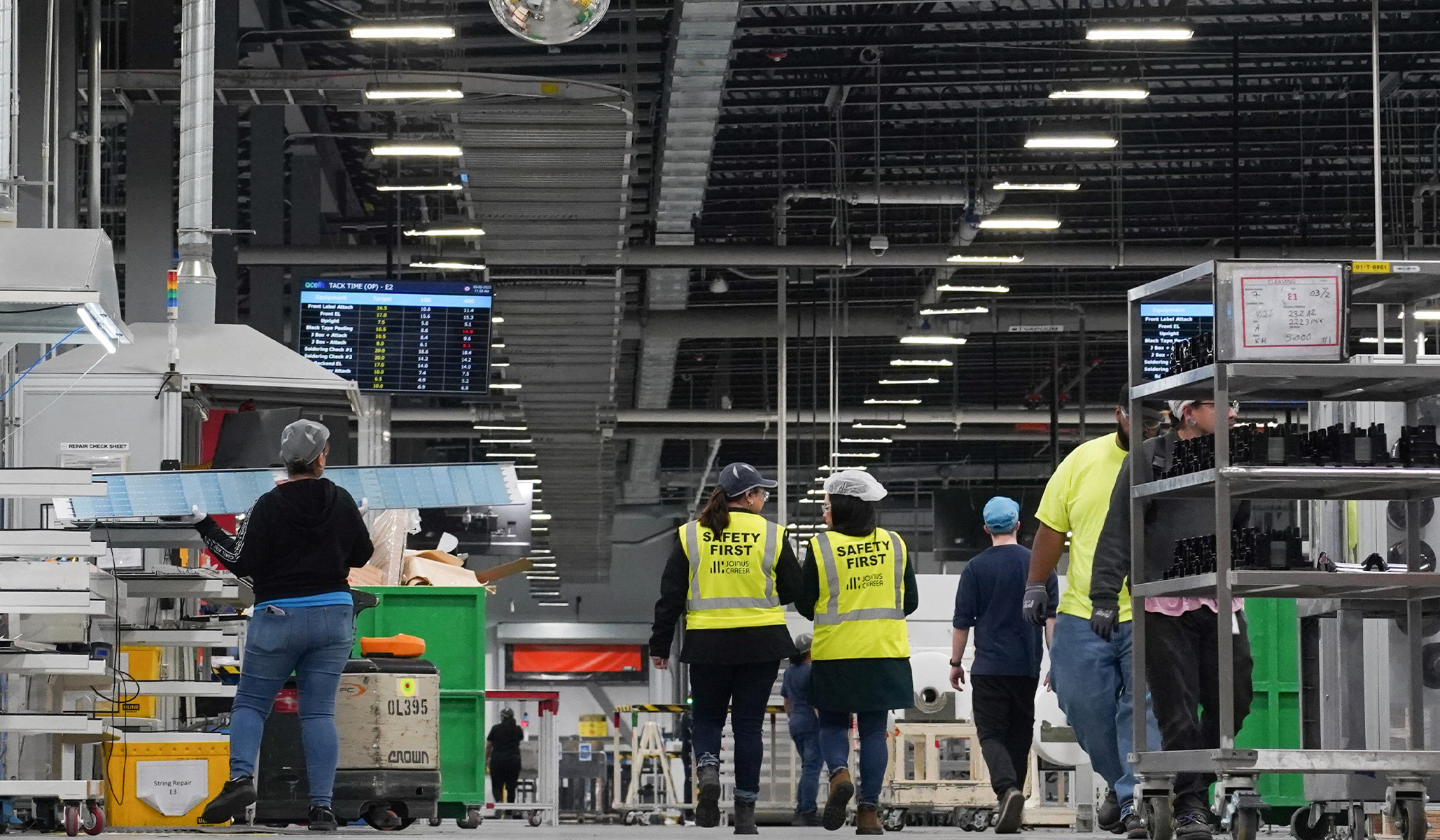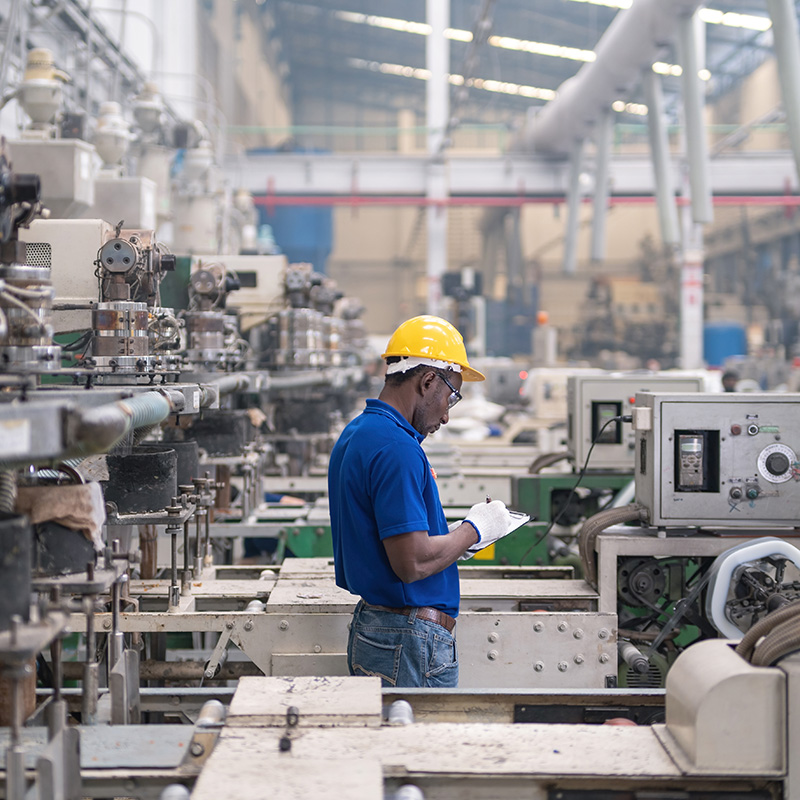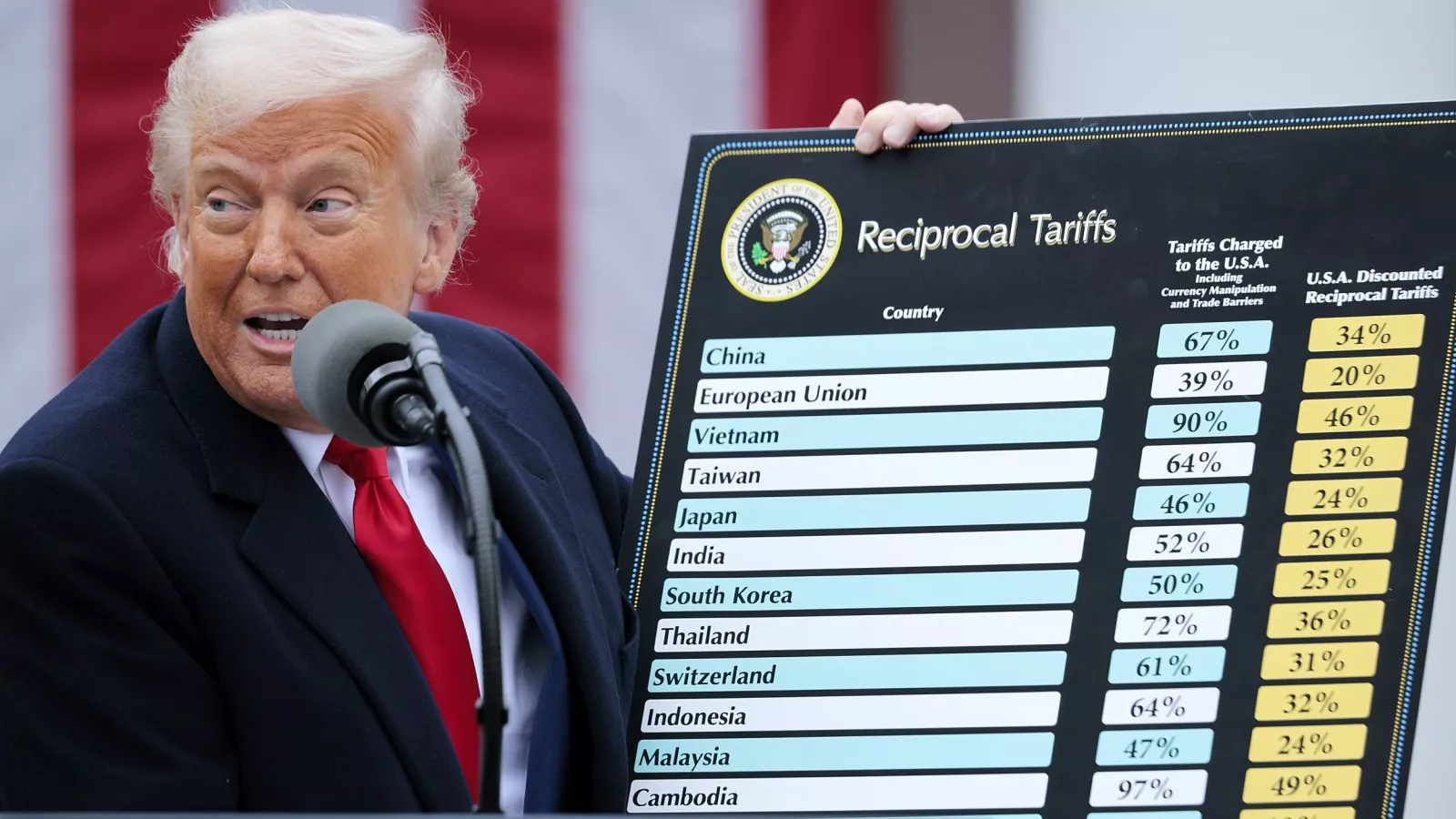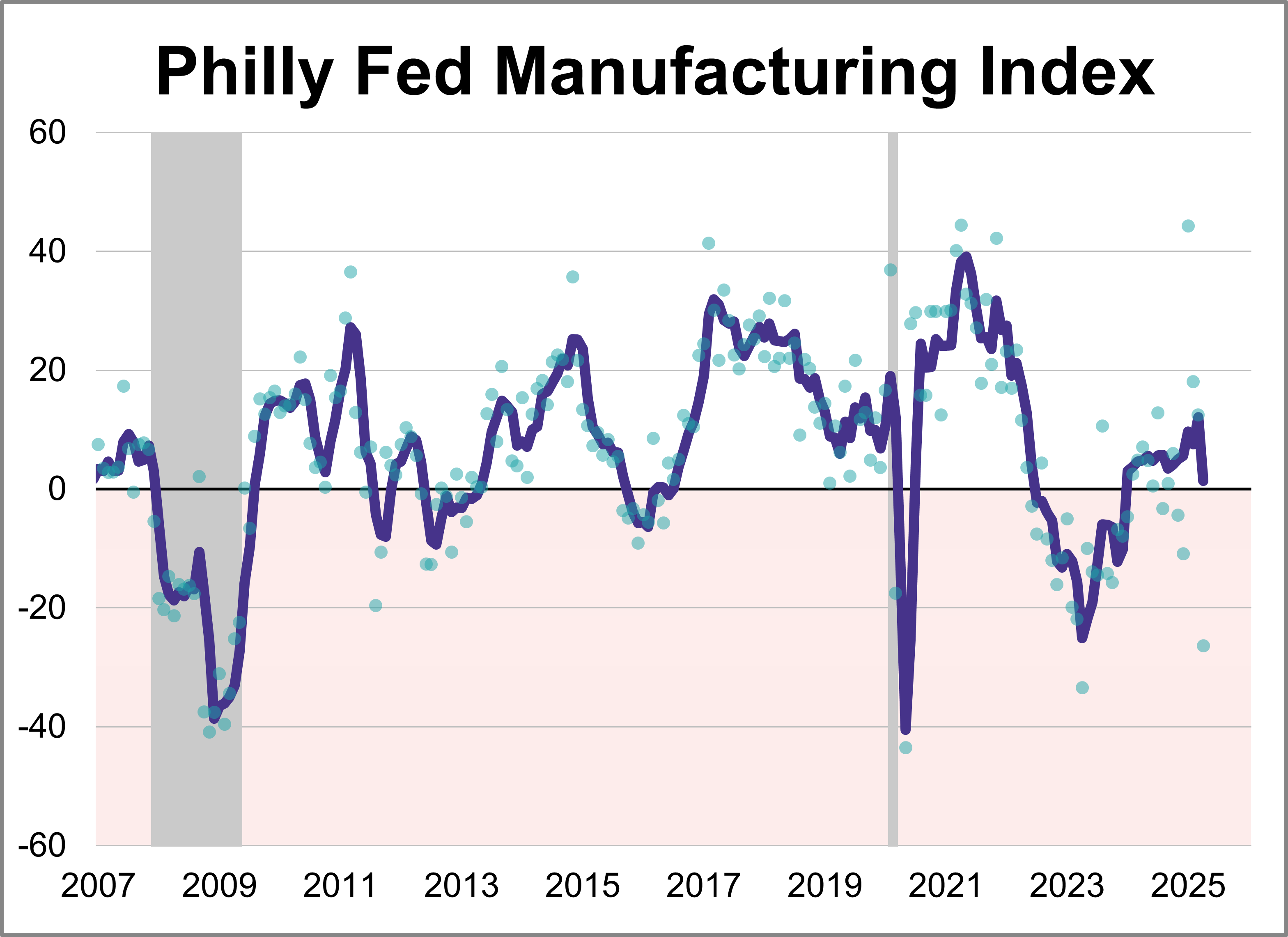Jobs Lost: Phillips Manufacturing Shutters Niles Facility Amid Sudden Closure
Manufacturing
2025-04-17 14:56:28
In a sudden and shocking turn of events, workers at the local plant were blindsided by an unexpected closure announcement on Wednesday morning. According to a union representative, employees were first alerted by a cryptic text message at 6 a.m., summoning them to an urgent meeting scheduled for 11 a.m. As workers gathered, anticipation and anxiety filled the room. Their worst fears were confirmed when management delivered the devastating news: the plant would be shutting down, effective immediately. The abrupt nature of the announcement left employees stunned and uncertain about their professional futures. The early morning text message and subsequent meeting represent a stark and impersonal approach to communicating such a significant workplace disruption, leaving workers with little time to process the life-changing information. MORE...
Breaking Barriers: How CEAT is Revolutionizing Manufacturing Through Women's Empowerment
Manufacturing
2025-04-17 14:50:00
CEAT Accelerates Diversity Efforts: Pioneering Gender Inclusion in Manufacturing CEAT, a leading tire manufacturer, is making significant strides in workplace diversity by setting ambitious gender representation goals. The company has committed to transforming its workforce landscape, targeting 25% gender diversity on the shop floor and 20% female representation in leadership positions by 2027. This strategic initiative goes beyond mere numbers, reflecting CEAT's progressive approach to creating an inclusive and equitable work environment. By actively promoting gender diversity in traditionally male-dominated manufacturing sectors, the company is challenging industry norms and setting a new benchmark for corporate inclusivity. The comprehensive plan involves targeted recruitment, skill development programs, and creating supportive workplace policies that encourage and retain female talent across different organizational levels. CEAT's leadership recognizes that diverse teams drive innovation, enhance problem-solving capabilities, and contribute to overall organizational resilience. Through these deliberate efforts, CEAT is not just changing its workforce composition but also sending a powerful message about the importance of gender equality in the industrial sector. The company's commitment demonstrates how strategic diversity initiatives can create meaningful opportunities and transform workplace culture. MORE...
Tariff Tremors: How Trump's Trade War Is Shaking US Manufacturing's Foundation
Manufacturing
2025-04-17 14:49:43
The economic landscape is being dramatically reshaped by the ripple effects of President Trump's tariff policies, with mounting uncertainty casting a long shadow over key economic indicators. Recent Federal Reserve surveys reveal a troubling trend: both manufacturing and services sectors are experiencing significant disruption, reflecting the complex challenges posed by the ongoing trade tensions. The unpredictable nature of these tariffs has created a climate of hesitation among businesses, causing them to pull back on investment and strategic planning. Manufacturers and service providers alike are finding themselves caught in a web of economic uncertainty, struggling to navigate the volatile trade environment created by the administration's aggressive trade stance. As these Federal Reserve surveys demonstrate, the impact goes far beyond simple trade metrics. The uncertainty is eroding business confidence, potentially slowing economic growth and creating a sense of unpredictability that threatens to undermine the robust economic momentum of recent years. MORE...
Inside the Factory Floor: The Untold Story of American Manufacturing's Transformation
Manufacturing
2025-04-17 13:49:20
Despite Persistent Pessimism, American Manufacturing Shows Resilience and Promise The narrative surrounding U.S. manufacturing has long been painted with broad strokes of pessimism, with many predicting its inevitable decline. However, a closer examination reveals a more nuanced and surprisingly optimistic landscape. Recent years have witnessed a remarkable transformation in the manufacturing sector. While global competition and technological disruption have challenged traditional manufacturing models, American companies are adapting with remarkable ingenuity. Advanced technologies like automation, artificial intelligence, and precision robotics are breathing new life into industrial production. The COVID-19 pandemic exposed critical vulnerabilities in global supply chains, prompting many businesses to reconsider offshore manufacturing and prioritize domestic production. This shift, coupled with government initiatives supporting domestic manufacturing, has sparked a renewed interest in rebuilding and strengthening American industrial capabilities. Emerging sectors such as clean energy, advanced electronics, and high-tech manufacturing are creating exciting opportunities. Innovative companies are not just surviving but thriving, demonstrating that American manufacturing is far from obsolete. Skilled workforce development, technological innovation, and strategic investments are positioning the United States to compete effectively in the global marketplace. While challenges remain, the future of U.S. manufacturing looks increasingly promising. The sector is not dying but evolving, adapting, and preparing to lead in the next era of industrial innovation. MORE...
How the MEP Program Could Save American Manufacturing from Extinction
Manufacturing
2025-04-17 13:20:12
In a dramatic policy shift that highlights the complex interplay between political strategy and industrial economics, the Trump administration is executing a strategic retreat on a previously announced manufacturing initiative. This reversal reveals the nuanced challenges of balancing national economic interests with political considerations. The decision signals a profound understanding of the delicate ecosystem of American manufacturing, demonstrating how even the most assertive policy positions can be recalibrated when confronted with practical realities. By stepping back from its original stance, the administration is showing a willingness to adapt and respond to the intricate dynamics of industrial policy. The move underscores the critical importance of manufacturing to the U.S. economy, revealing that pragmatic considerations often trump ideological rigidity. It also reflects the administration's recognition that economic strategies must remain flexible and responsive to changing market conditions and stakeholder concerns. This policy adjustment serves as a compelling reminder that effective governance requires continuous assessment and potential modification of strategic approaches, especially in sectors as complex and consequential as manufacturing. MORE...
Steel, Tariffs, and Comeback: How Trump Revived American Factory Floors
Manufacturing
2025-04-17 13:17:33
In the complex landscape of American manufacturing, tariff walls have emerged as a critical lifeline for revitalizing the nation's industrial sector. While controversial and often polarizing, these protective trade barriers represent more than just economic policy—they are a strategic blueprint for rebuilding America's manufacturing prowess. The global economic battlefield is unforgiving, with international competitors constantly seeking advantages. High tariffs serve as a robust shield, protecting domestic manufacturers from being overwhelmed by cheaper foreign imports. By creating a more level playing field, these trade barriers give U.S. factories breathing room to innovate, invest in advanced technologies, and strengthen their competitive edge. Critics may argue that tariffs increase consumer costs, but the long-term benefits far outweigh short-term price fluctuations. A reinvigorated manufacturing sector means more high-quality jobs, increased economic resilience, and reduced dependency on foreign supply chains. As global economic dynamics continue to shift, strategic tariff implementation becomes not just an option, but a necessity for maintaining national economic sovereignty. The path to industrial renaissance is paved with bold, sometimes uncomfortable economic strategies. High tariff walls are not just a protective measure—they are an investment in America's industrial future, signaling a commitment to domestic production and economic self-determination. MORE...
Chip Giant TSMC Reveals Earnings: Why U.S. Factory Expansion Isn't Moving the Needle
Manufacturing
2025-04-17 12:55:45
TSMC Soars: AI Chip Demand Propels Semiconductor Giant to Impressive Q2 Performance
Taiwan Semiconductor Manufacturing Company (TSMC) has once again demonstrated its market leadership, delivering a stellar second quarter that significantly outpaced financial expectations. The company's revenue surged by an impressive $1.58 billion, driven primarily by the insatiable demand for advanced AI chips.
Despite lingering concerns about capital expenditure, TSMC has maintained remarkably resilient profit margins, showcasing its operational efficiency and strategic positioning in the rapidly evolving semiconductor landscape. The robust performance has prompted analysts to maintain a strong "Buy" recommendation for the stock.
The semiconductor manufacturer continues to benefit from the global AI revolution, with major tech giants increasingly relying on TSMC's cutting-edge manufacturing capabilities to power their most advanced artificial intelligence technologies. This trend suggests continued strong growth potential for the company in the coming quarters.
Investors and industry observers are closely watching TSMC as it navigates the complex semiconductor market, balancing strategic investments with impressive financial returns. The company's ability to exceed expectations while managing capital expenditure challenges underscores its exceptional market leadership.
MORE...Manufacturing's Masculinity Problem: Why Workers Are Turning Away from Trump-Era Job Promises
Manufacturing
2025-04-17 12:07:54
Despite President Trump's bold claims that tariffs will revive American manufacturing, workers tell a different story. The promise of returning to factory floors seems increasingly disconnected from the economic realities and career aspirations of modern American workers. While Trump has consistently championed tariffs as a lifeline for industrial jobs, most Americans envision their professional futures far from traditional assembly lines. The workforce is increasingly gravitating towards technology, service, and knowledge-based careers that offer more dynamic opportunities and higher earning potential. The manufacturing landscape has fundamentally transformed. Automation, advanced robotics, and artificial intelligence have dramatically reduced the need for manual labor. Today's manufacturing jobs require sophisticated technical skills and advanced education, not just physical strength and repetitive tasks. Young professionals are more likely to pursue careers in software development, digital marketing, healthcare, and emerging tech sectors. The romantic notion of rebuilding America's industrial might through tariffs fails to acknowledge the profound shifts in workforce preferences and global economic dynamics. Moreover, many workers recognize that protectionist policies alone cannot reverse decades of industrial decline. Sustainable job creation requires comprehensive strategies involving education, workforce training, and strategic economic investments. Trump's tariff narrative might resonate politically, but it increasingly rings hollow for a workforce looking forward, not backward. The future of American employment lies in innovation, adaptability, and embracing the digital transformation, not in attempting to resurrect a manufacturing model from the past. MORE...
Chip Giant TSMC Defies Trade Tensions: Massive $10.7B Q1 Windfall Despite US Tariff Challenges
Manufacturing
2025-04-17 12:03:45
In our recent exploration of AI's most dynamic stocks, Taiwan Semiconductor Manufacturing Company Limited (NYSE:TSM) emerges as a standout player in the rapidly evolving technological landscape. As the AI race intensifies, TSM's strategic position becomes increasingly compelling. A groundbreaking report from Stanford University's Institute for Human-Centered Artificial Intelligence offers fascinating insights into the current market dynamics. Despite ongoing market uncertainties, the competition among AI-focused companies has never been more fierce or exciting. TSM, a global leader in semiconductor manufacturing, sits at the critical intersection of technological innovation and AI infrastructure. The company's advanced chip technologies are powering the next generation of artificial intelligence applications, making it a key player in this transformative technological era. Investors and tech enthusiasts alike are closely watching how TSM navigates the complex and fast-moving AI ecosystem. With its cutting-edge manufacturing capabilities and strategic partnerships, the company continues to demonstrate why it remains a top contender in the AI stock market. As the technological landscape evolves, TSM's role in shaping the future of AI becomes increasingly significant, promising potential growth and innovation in the years to come. MORE...
Manufacturing Mood Plummets: Philly Fed's Grim Economic Signal
Manufacturing
2025-04-17 12:00:00
Manufacturing Sentiment Plummets: Philadelphia Fed Index Signals Economic Challenges The manufacturing sector is experiencing a significant downturn, as revealed by the latest Philadelphia Federal Reserve manufacturing index. The indicator dramatically dropped nearly 39 points to -26.4, marking its lowest point in two years and sharply missing economic expectations. Economists had anticipated a modest positive reading of 2.2, but the actual results paint a much bleaker picture. This substantial decline suggests growing challenges in the manufacturing landscape, potentially signaling broader economic headwinds and reduced industrial activity. The steep fall in the index could indicate mounting pressures on manufacturers, including supply chain disruptions, rising costs, and uncertain market conditions. Investors and policymakers will likely scrutinize this data for insights into the overall economic trajectory and potential policy interventions. MORE...
- 1
- 2
- 3
- 4
- 5
- 6
- 7
- 8
- 9
- 10
- 11
- 12
- 13
- 14
- 15
- 16
- 17
- 18
- 19
- 20
- 21
- 22
- 23
- 24
- 25
- 26
- 27
- 28
- 29
- 30
- 31
- 32
- 33
- 34
- 35
- 36
- 37
- 38
- 39
- 40
- 41
- 42
- 43
- 44
- 45
- 46
- 47
- 48
- 49
- 50
- 51
- 52
- 53
- 54
- 55
- 56
- 57
- 58
- 59
- 60
- 61
- 62
- 63
- 64
- 65
- 66
- 67
- 68
- 69
- 70
- 71
- 72
- 73
- 74
- 75
- 76
- 77
- 78
- 79
- 80
- 81
- 82
- 83
- 84
- 85
- 86
- 87
- 88
- 89
- 90
- 91
- 92
- 93
- 94
- 95
- 96
- 97
- 98
- 99
- 100
- 101
- 102
- 103
- 104
- 105
- 106
- 107
- 108
- 109
- 110
- 111
- 112
- 113
- 114
- 115
- 116
- 117
- 118
- 119
- 120
- 121
- 122
- 123
- 124
- 125
- 126
- 127
- 128
- 129
- 130
- 131
- 132
- 133
- 134
- 135
- 136
- 137
- 138
- 139
- 140
- 141
- 142
- 143
- 144
- 145
- 146
- 147
- 148
- 149
- 150
- 151
- 152
- 153
- 154
- 155
- 156
- 157
- 158
- 159
- 160
- 161
- 162
- 163
- 164
- 165
- 166
- 167
- 168
- 169
- 170
- 171
- 172
- 173
- 174
- 175
- 176
- 177
- 178
- 179
- 180
- 181
- 182
- 183
- 184
- 185
- 186
- 187
- 188
- 189
- 190
- 191
- 192
- 193
- 194
- 195
- 196
- 197
- 198
- 199
- 200
- 201
- 202
- 203
- 204
- 205
- 206
- 207
- 208
- 209
- 210
- 211
- 212
- 213
- 214
- 215
- 216
- 217
- 218
- 219
- 220
- 221
- 222
- 223
- 224
- 225
- 226
- 227
- 228
- 229
- 230
- 231
- 232
- 233
- 234
- 235
- 236
- 237
- 238











